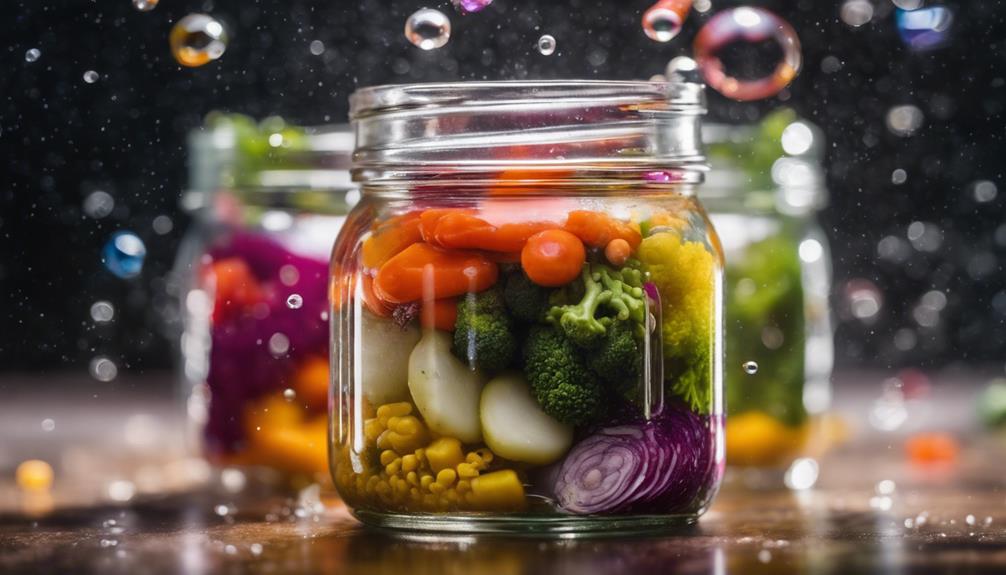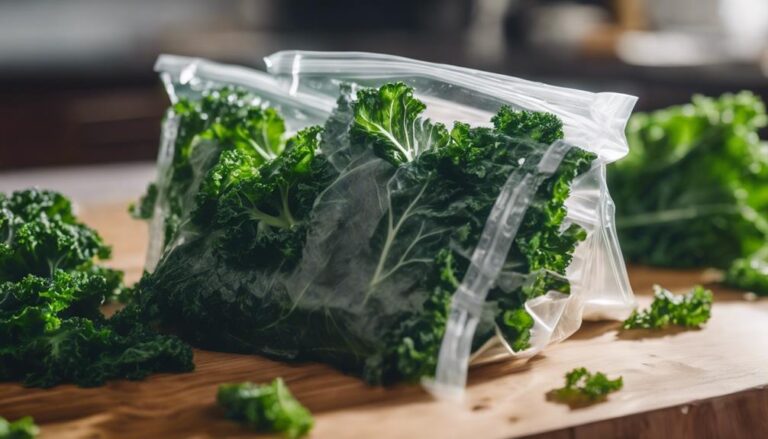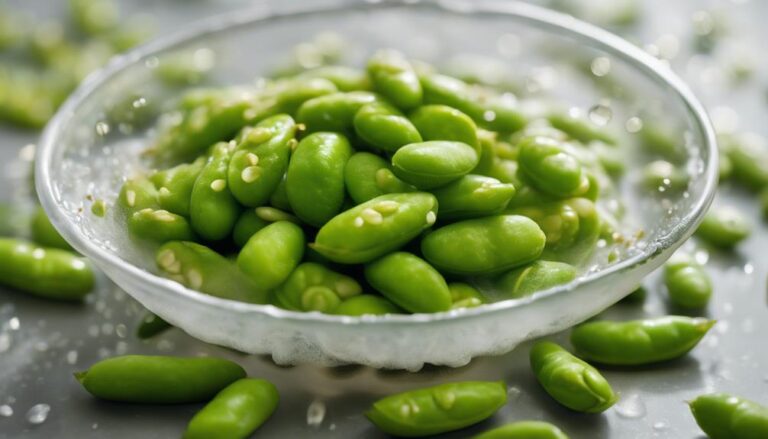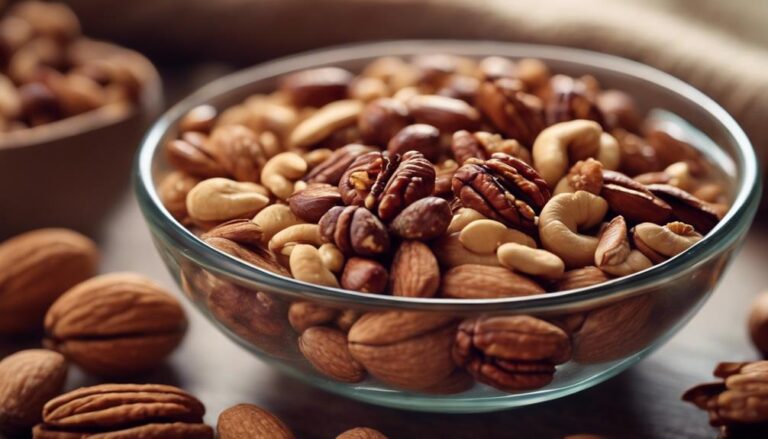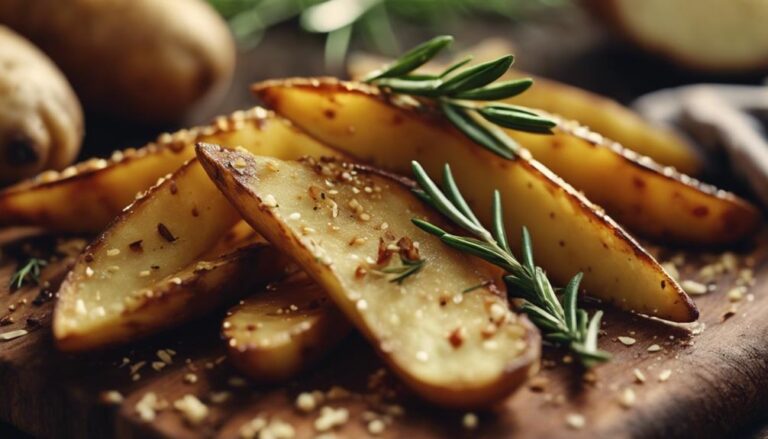Sous Vide Pickled Vegetables: A Crunchy Delight
Indulge in the perfect pairing of sous vide technique and crunchy pickled vegetables. Achieve unparalleled flavor and texture harmony through this culinary fusion. The precise sous vide method enhances the vegetables' natural crunch, while the pickling process adds a burst of tangy delight. Experience a symphony of tastes in every bite. Discover the secrets behind this exquisite marriage of techniques for a culinary experience like no other. Get ready to elevate your cooking skills to new levels of sophistication and taste.
What You Will Learn Here
- Sous vide pickling preserves crunchiness and enhances flavors.
- Precise temperature control in sous vide maintains vegetable texture.
- Vacuum sealing with sous vide ensures optimal pickling results.
- Experiment with different sous vide times for varied textures.
- Sous vide pickled vegetables offer a modern twist on traditional pickling methods.
Pickling in Ancient Mesopotamia
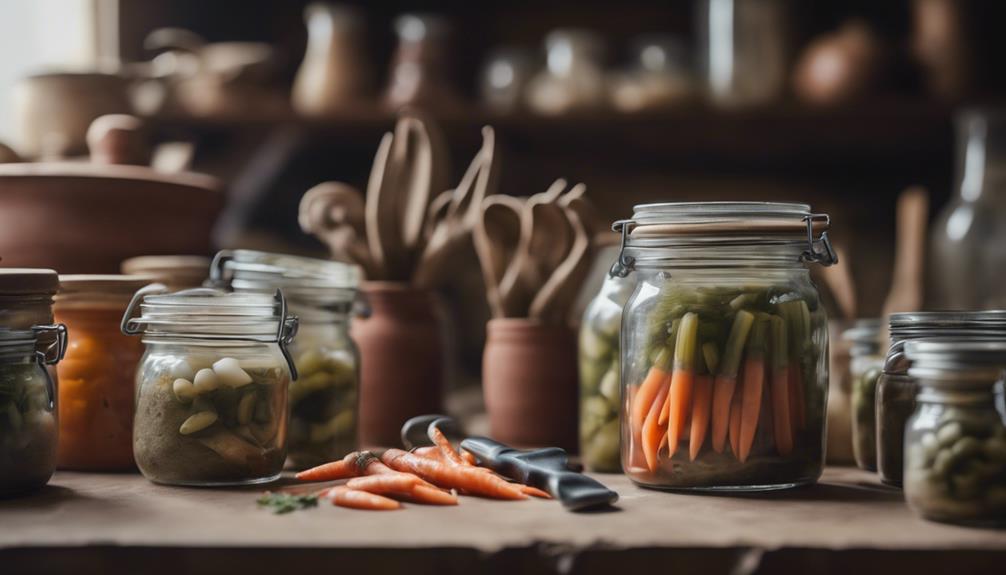
Ancient Mesopotamia played a pivotal role in the development of pickling techniques.
Historical records suggest that Mesopotamians utilized various ingredients like vinegar, herbs, and spices in their pickling processes.
The evolution of pickling methods in this region offers valuable insights into the culinary practices of ancient civilizations.
Mesopotamian Pickling Techniques
In Mesopotamian pickling techniques, the preservation of vegetables was achieved through a meticulous process involving the use of various spices and brines. Ancient preservation methods in Mesopotamia were vital for maintaining food supplies and enhancing culinary heritage.
Vegetables were carefully prepared by soaking them in salt solutions or vinegar-based brines, which helped to inhibit the growth of harmful bacteria and extend their shelf life. Spices such as cumin, coriander, and mustard seeds were commonly used to impart flavor to the pickled vegetables.
The Mesopotamians' attention to detail and precise execution of pickling techniques allowed them to enjoy a variety of preserved vegetables throughout the year, showcasing their advanced culinary skills and appreciation for food preservation.
Historical Pickling Ingredients
During the time of Mesopotamia, pickling techniques relied on a combination of specific ingredients to preserve vegetables effectively. Historical preservation techniques and culinary traditions played an important role in the art of pickling. Ancient food preservation methods often included traditional ingredients that were readily available in that region. Below is a table showcasing some common ingredients used in Mesopotamian pickling:
| Ingredient | Purpose |
|---|---|
| Salt | Preservation |
| Vinegar | Flavor enhancement |
| Herbs | Aromatic touch |
| Spices | Enhanced taste |
| Water | Brine solution |
Understanding these traditional ingredients sheds light on the historical significance of pickling in Ancient Mesopotamia.
Pickling Methods Evolution
The evolution of pickling methods in Mesopotamia can be traced back to the strategic combination of specific ingredients for preserving vegetables effectively. Ancient Mesopotamians utilized cultural influences and pickling innovations to develop techniques that laid the foundation for modern pickling trends.
The process of pickling in Ancient Mesopotamia involved the use of various spices, herbs, and brines to enhance the flavor and extend the shelf life of vegetables. Through experimentation and knowledge sharing, Mesopotamian communities refined their pickling methods, paving the way for the diverse array of pickled foods we enjoy today.
These early innovations in pickling not only served as a means of food preservation but also contributed to the development of culinary practices that continue to influence modern gastronomy.
Pickling Spice Mixes
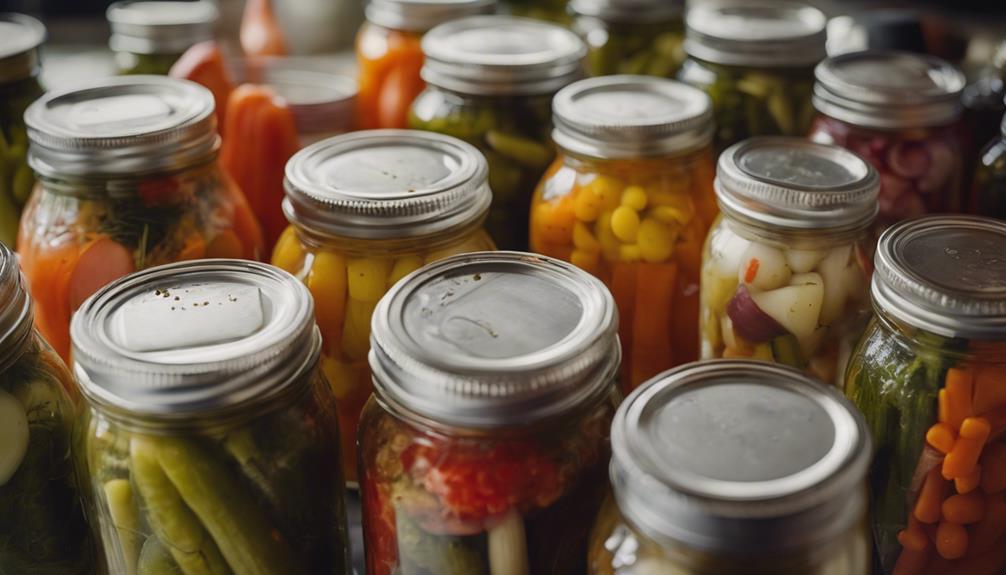
Enhance the flavor of your pickled vegetables by carefully selecting and blending various spices to create a unique pickling spice mix. When concocting your own pickling spice blends, flavor experimentation knows no bounds. To elevate your pickling experience, consider the following:
- Traditional Blend: Experiment with a classic mix of mustard seeds, coriander seeds, peppercorns, and bay leaves for a timeless flavor profile.
- Global Fusion: Infuse your pickling spice mix with international influences by incorporating spices like star anise, ginger, and turmeric for a unique twist.
- Herbal Infusion: Add a fresh dimension to your pickled vegetables by including herbs such as dill, thyme, or rosemary in your spice mix for a fragrant and aromatic touch.
- Spicy Kick: For those who enjoy a bit of heat, consider incorporating chili flakes, cayenne pepper, or Szechuan peppercorns to give your pickled vegetables a fiery punch.
Popular Recipes{opti
When exploring popular recipes for sous vide pickled vegetables, you may consider trying Sous Vide Beet Pickles, Spicy Carrot Pickles, and Zesty Jalapeno Pickles.
These recipes offer a range of flavors and textures that can complement various dishes.
Experimenting with different vegetable combinations and pickling techniques can lead to unique and delicious results.
Sous Vide Beet Pickles
For best results, consider using a vacuum-sealed bag when preparing sous vide beet pickles.
- Temperature: Set your sous vide water bath to 185°F (85°C).
- Preparation: Peel and slice the beets thinly for even pickling.
- Beet Brine: Create a mixture of vinegar, sugar, salt, and spices to infuse the beets.
- Sous Vide Cooking: Submerge the vacuum-sealed bag of beets in the water bath for 1.5 hours to achieve the perfect crunch.
Spicy Carrot Pickles
To achieve bold flavors in your spicy carrot pickles, make sure the carrots are thinly sliced before immersing them in the pickling solution. Here are four key steps to create delicious spicy carrot pickles:
- Flavor Combinations: Experiment with different spices like red pepper flakes, garlic, and coriander seeds to enhance the flavor profile of your pickles.
- Fermentation Process: Allow the carrots to ferment in the pickling solution for at least 3-4 days to develop a tangy and spicy taste.
- Thin Slices: Ensure the carrots are thinly sliced to allow the pickling solution to penetrate the carrots thoroughly.
- Taste Testing: Taste the pickles during the fermentation process to adjust the flavors to your liking, ensuring a perfect balance of spice and tanginess.
Zesty Jalapeno Pickles
For achieving robust flavors in zesty jalapeno pickles, ensuring the jalapenos are thinly sliced is essential. To elevate your zesty jalapeno pickles, follow these precise steps:
- Thinly Sliced Jalapenos: Slice the jalapenos thinly to maximize surface area exposure.
- Flavorful Jalapeno Brine: Use a well-balanced jalapeno brine to infuse the pickles with a zesty kick.
- Pickling Creativity: Experiment with adding different herbs or spices to the brine for a unique twist.
- Patience in Pickling: Allow the jalapenos to pickle for the ideal duration to develop the desired flavors.
Pickling Time Recommendations
When pickling vegetables, the time they spend in the brine is vital for both flavor development and texture preservation.
The pickling process involves a delicate balance of acidity and time, which impacts how the flavors evolve and intensify.
To achieve the desired results, it's important to follow recommended pickling times for each type of vegetable.
Pickling Time Importance
Timing plays an essential role in determining the flavor profile and texture of pickled vegetables. The pickling duration directly impacts the development of flavor profiles, with shorter times resulting in a milder taste and longer durations intensifying the tanginess and complexity of the pickles.
Additionally, time plays a pivotal role in achieving the perfect texture balance. A shorter pickling period can lead to crunchier vegetables, while extended pickling times can result in a softer texture. Finding the ideal pickling time is key to striking the right balance between flavor and texture.
Experimenting with different durations will allow you to customize your pickled vegetables to suit your preferences, ensuring a crunchy delight with the ideal flavor profile for your palate.
Flavors Development Process
To optimize the flavor development in pickled vegetables, consider adjusting the pickling time based on your desired taste intensity and texture preferences. The pickling process plays an essential role in shaping the flavor profiles of the vegetables.
Longer pickling times generally result in more intense and complex flavors due to increased exposure to the pickling solution. However, shorter pickling times may be preferred if you aim to retain more of the natural taste of the vegetables. Additionally, fermentation benefits can vary depending on the duration of the pickling process.
Shorter pickling times may offer a more crisp texture, while longer pickling times can soften the vegetables. Experimenting with different pickling times will help you achieve the perfect balance of flavors and textures in your pickled vegetables.
Texture Preservation Tips
For ideal texture preservation in pickled vegetables, consider carefully adjusting the duration of the pickling process to achieve the desired crispness or softness in the final product.
Texture preservation is vital in maintaining the integrity of the vegetables during the pickling process. To achieve this, control the pickling time to balance the desired level of crunchiness or tenderness.
The pickling time recommendations vary depending on the type of vegetable being pickled. Firmer vegetables like carrots or radishes may require a shorter pickling time to maintain their crunch, while softer vegetables like cucumbers or bell peppers might need a longer pickling duration to achieve the desired texture.
Final Thoughts
Consider incorporating a variety of vegetables to enhance the overall flavor profile of your sous vide pickled dishes. Mixing different vegetables not only adds complexity but also creates a visually appealing array of colors and textures. Experiment with combinations like carrots, cucumbers, and red onions for a well-rounded taste experience.
When it comes to storing your sous vide pickled vegetables, remember to keep them refrigerated at all times. Properly sealed containers or vacuum-sealed bags can help maintain freshness and extend the shelf life of your pickled creations. Additionally, labeling your containers with the date of preparation can assist in monitoring their expiration dates.
Frequently Asked Questions
How Can I Adjust the Pickling Time for Different Types of Vegetables?
When adjusting pickling times for various vegetables, consider their density and water content. Experiment with shorter durations for delicate veggies like cucumbers and longer for denser ones like beets. Create unique flavor combinations by varying pickling durations.
Are There Any Safety Concerns to Consider When Pickling Vegetables Using Sous Vide?
When pickling vegetables using sous vide, food safety guidelines are essential. Follow proper pickling process and precautions to prevent bacterial growth. Maintain recommended temperatures and times to guarantee safety and enjoy your crunchy delights.
Can I Reuse the Pickling Liquid for Multiple Batches of Vegetables?
You can reuse the pickling liquid for multiple batches of vegetables to infuse them with consistent flavor. However, be mindful of flavor variations and proper storage. Adapting pickling techniques can help maintain quality over time.
Are There Any Alternative Methods to Sous Vide for Pickling Vegetables?
You can explore alternative methods like quick pickling or traditional fermentation for pickling vegetables. These processes offer varied flavor profiles and textures. Quick pickling involves a vinegar solution for rapid results, while fermentation relies on natural bacteria for a unique taste.
Can I Store Sous Vide Pickled Vegetables at Room Temperature, or Do They Need to Be Refrigerated?
You should refrigerate sous vide pickled vegetables for best shelf stability. Various pickling techniques might allow room temperature storage, but refrigeration guarantees safety. To preserve quality and prevent spoilage, store them in the fridge.
Conclusion
In summary, sous vide pickled vegetables offer a crunchy delight that's both flavorful and nutritious. By employing exact temperature control and vacuum sealing, this contemporary variation on a traditional preservation method guarantees ideal texture and taste.
Experiment with different pickling spice mixes and varying pickling times to customize your pickled vegetables to suit your palate.
Embrace the ancient art of pickling with a modern twist through sous vide techniques.
